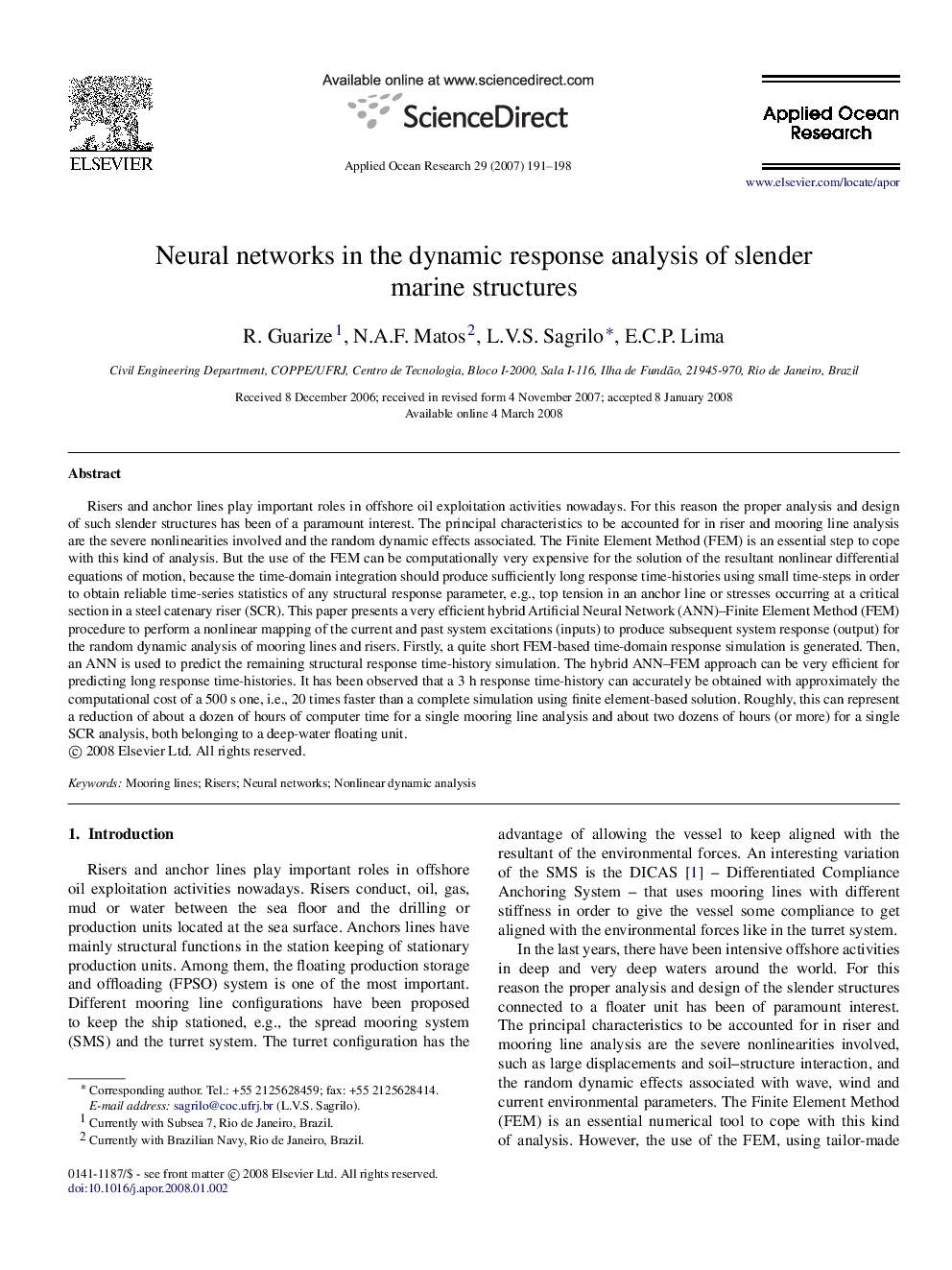| کد مقاله | کد نشریه | سال انتشار | مقاله انگلیسی | نسخه تمام متن |
|---|---|---|---|---|
| 1720430 | 1014256 | 2007 | 8 صفحه PDF | دانلود رایگان |

Risers and anchor lines play important roles in offshore oil exploitation activities nowadays. For this reason the proper analysis and design of such slender structures has been of a paramount interest. The principal characteristics to be accounted for in riser and mooring line analysis are the severe nonlinearities involved and the random dynamic effects associated. The Finite Element Method (FEM) is an essential step to cope with this kind of analysis. But the use of the FEM can be computationally very expensive for the solution of the resultant nonlinear differential equations of motion, because the time-domain integration should produce sufficiently long response time-histories using small time-steps in order to obtain reliable time-series statistics of any structural response parameter, e.g., top tension in an anchor line or stresses occurring at a critical section in a steel catenary riser (SCR). This paper presents a very efficient hybrid Artificial Neural Network (ANN)–Finite Element Method (FEM) procedure to perform a nonlinear mapping of the current and past system excitations (inputs) to produce subsequent system response (output) for the random dynamic analysis of mooring lines and risers. Firstly, a quite short FEM-based time-domain response simulation is generated. Then, an ANN is used to predict the remaining structural response time-history simulation. The hybrid ANN–FEM approach can be very efficient for predicting long response time-histories. It has been observed that a 3 h response time-history can accurately be obtained with approximately the computational cost of a 500 s one, i.e., 20 times faster than a complete simulation using finite element-based solution. Roughly, this can represent a reduction of about a dozen of hours of computer time for a single mooring line analysis and about two dozens of hours (or more) for a single SCR analysis, both belonging to a deep-water floating unit.
Journal: Applied Ocean Research - Volume 29, Issue 4, November 2007, Pages 191–198